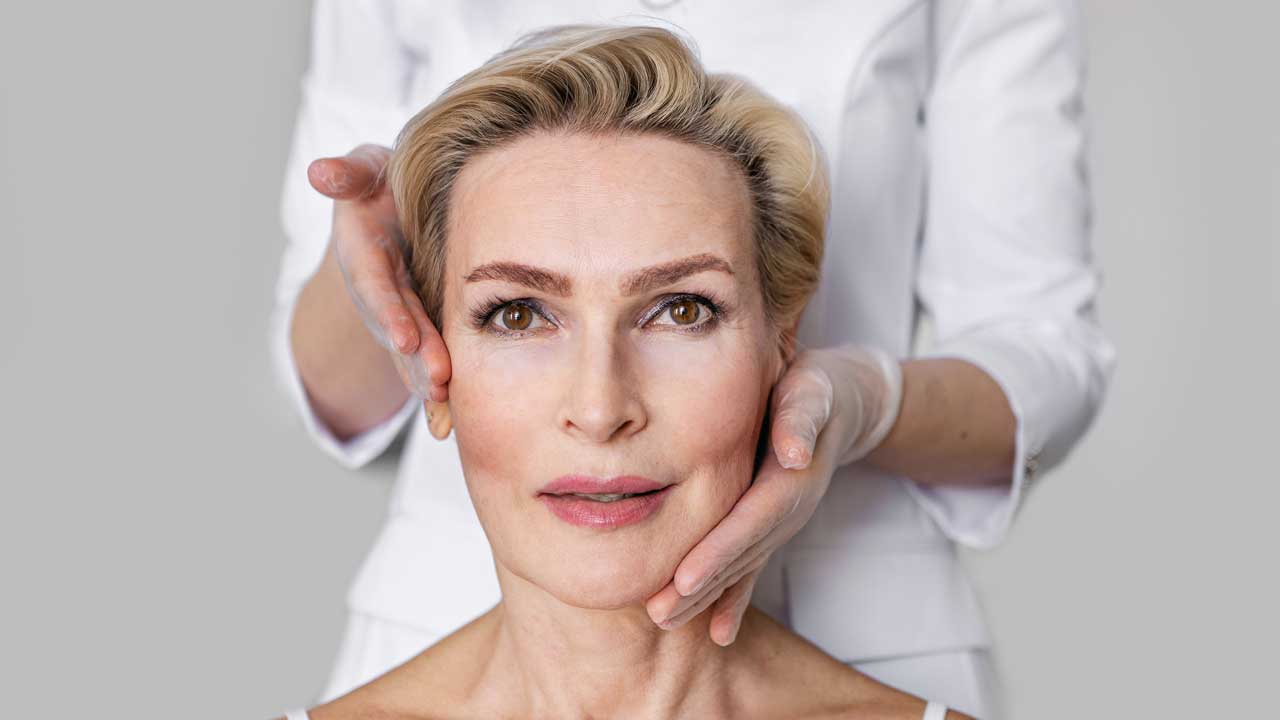Let’s be honest: looking in the mirror and noticing sagging skin, deepening folds, and a loss of that youthful contour can be a jarring experience. The desire to turn back the clock is powerful, and today’s cosmetic medicine offers more options than ever. But with choice comes confusion. Two of the most talked-about solutions for facial rejuvenation are the traditional facelift and the increasingly popular thread lift.
You’re likely asking yourself: “Do I need the dramatic, long-lasting results of a surgical facelift, or is a minimally invasive thread lift sufficient for my needs?” This isn’t a one-size-fits-all answer. It hinges on your specific aging concerns, lifestyle, budget, and tolerance for downtime.
This comprehensive guide will dissect the facelift vs. thread lift debate, giving you the clear, detailed information you need to make an empowered decision. We’ll explore how each procedure works, who the ideal candidate is, and what you can realistically expect in terms of results, recovery, and cost.
Understanding the Fundamentals: A Tale of Two Techniques
Before we dive into the comparison, it’s crucial to understand what each procedure actually entails. They are fundamentally different in their approach, invasiveness, and philosophy.
What is a Surgical Facelift (Rhytidectomy)?
A facelift, or rhytidectomy, is a surgical procedure designed to address significant signs of aging in the lower two-thirds of the face and neck. Think of it as a comprehensive overhaul.
- The Goal: To reposition deep anatomical structures, remove excess skin, and tighten underlying tissues for a more restored and youthful appearance.
- The Procedure: Performed under general anesthesia or deep sedation, a surgeon makes incisions typically starting at the temples, continuing down in front of the ear, and wrapping around behind the earlobe into the lower scalp. Through these incisions, they lift and reposition sagging muscles (like the SMAS layer), redistribute fat, and trim away redundant skin.
- The Result: A dramatic and long-lasting rejuvenation that addresses jowls, deep nasolabial folds (smile lines), and a loose neck.
What is a Thread Lift (The “Lunchtime Lift”)?
A thread lift is a minimally invasive procedure often dubbed the “lunchtime lift” for its short procedure time and recovery. It’s best thought of as a subtle lift and repositioning.
- The Goal: To provide a modest lift to sagging tissues using temporary, absorbable sutures with tiny cones or barbs.
- The Procedure: Using a fine needle or cannula, a practitioner inserts biocompatible threads (typically made of PDO or PLLA) under the skin. These threads have tiny cones that anchor into the tissue. Once placed, the practitioner gently pulls them upward, lifting the sagging skin and stimulating collagen production.
- The Result: A subtle, immediate lift with continued improvement over 3-6 months as new collagen forms. It’s ideal for early to moderate sagging, not advanced aging.
Head-to-Head Comparison: Breaking Down the Details
Now, let’s put these two procedures side-by-side across the most critical factors.
| Feature | Surgical Facelift | Thread Lift |
|---|---|---|
| Invasiveness | Major Surgery | Minimally Invasive Procedure |
| Anesthesia | General Anesthesia or IV Sedation | Local Anesthesia |
| Incisions/Scarring | Significant, though well-hidden | Tiny needle punctures, no visible scars |
| Primary Mechanism | Repositioning tissues, removing skin | Lifting and stimulating collagen |
| Ideal Candidate | Those with significant sagging and skin laxity | Those with mild to moderate sagging seeking a subtle boost |
| Downtime | 2-3 weeks of significant swelling and bruising | 3-7 days of mild swelling and bruising |
| Back to Work/Social | 2-3 weeks | Often 2-3 days |
| Results Timeline | Final results visible after 3-6 months | Immediate lift, improves over 3-6 months |
| Longevity of Results | 7-10 years or more | 1-3 years |
| Cost | $7,500 – $15,000+ | $1,500 – $4,500+ |
Diving Deeper into Key Differences
1. Results and Longevity: The Trade-Off
This is the core of the decision. A facelift offers transformative, long-lasting results. It physically repositions the structures of your face, providing a change that can last a decade or more. A thread lift offers a subtle refresh. It’s fantastic for lifting the mid-face, jowls, and brows slightly, but it cannot remove excess skin or correct severe neck laxity. Its results are temporary, as the threads dissolve within 6-18 months.
2. Downtime and Recovery: A World of Difference
Your lifestyle is a major factor. A facelift requires a commitment to recovery. You’ll need to plan for weeks of limited activity, managing swelling and bruising. It’s a process. A thread lift, conversely, allows you to return to most normal activities within a few days, making it a favorite for those who can’t take extended time off.
3. Cost Analysis: Investment vs. Expense
While a facelift has a higher upfront cost, its longevity means you’re paying for a decade of results. A thread lift is cheaper initially, but because the results are temporary, you will need repeat treatments to maintain the effect, which can add up over time.
Who is the Ideal Candidate for Each Procedure?
Choose a Surgical Facelift if:
- You have moderate to severe sagging in the cheeks, jowls, and neck.
- You have significant excess, loose skin.
- You are looking for a dramatic and definitive improvement.
- You are in good health and can dedicate time to a proper recovery.
- Your budget allows for a larger, one-time investment for long-term results.
Choose a Thread Lift if:
- You are in your late 30s to 50s with early signs of sagging (“pre-jowling”).
- You want a subtle lift and are not seeking a dramatic change.
- You have minimal loose skin but have lost facial volume and elasticity.
- You have a busy lifestyle and cannot afford significant downtime.
- You want to “test the waters” before committing to a surgical procedure.
- Your budget is better suited for a lower initial cost.
A Personal Anecdote: I once spoke with a client, let’s call her Sarah, who was 48 and frustrated that her foundation always settled into the slight folds around her mouth. She wasn’t ready for a facelift but felt her regular skincare routine had plateaued. A thread lift was her perfect solution. After a weekend of recovery, she had a subtle lift that made her look refreshed and well-rested—exactly what she wanted. For her 62-year-old mother with significant jowls and neck laxity, however, only a facelift could deliver the transformative result she desired.
The Importance of Choosing the Right Provider
Regardless of which path you choose, the single most important factor is your provider. For a surgical facelift, seek a board-certified plastic surgeon with extensive experience in facial procedures. For a thread lift, choose a highly-trained and experienced dermatologist or cosmetic surgeon. Don’t be afraid to ask for before-and-after photos of their actual patients and to discuss their specific technique.
The American Board of Cosmetic Surgery provides valuable resources for finding qualified surgeons.
The Final Verdict: It’s About Your Goals
So, facelift vs. thread lift—which is right for you?
- For comprehensive, long-lasting correction of advanced aging: The surgical facelift remains the gold standard. It is an investment in a transformed appearance that stands the test of time.
- For a subtle, minimally invasive boost with little downtime: The thread lift is an excellent option for those combating early signs of sagging or who are not ready for surgery.
The best next step is to schedule consultations with qualified professionals. Discuss your goals, concerns, and medical history openly. A good provider will assess your facial anatomy and skin quality and give you an honest recommendation on which procedure—or even a combination of therapies like [fillers and Botox](link to your other blog post on non-surgical treatments)—will help you achieve your aesthetic goals safely and effectively.
Have you been considering a facial rejuvenation procedure? What are your biggest questions or concerns about facelifts or thread lifts? Share your thoughts in the comments below—we love starting a conversation! And if you found this guide helpful, please share it with a friend who might be on a similar journey.


